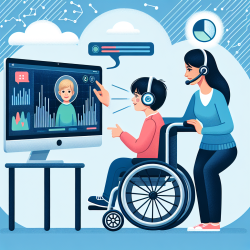Introduction
As a Special Education Director, you are at the forefront of creating inclusive educational environments that cater to the diverse needs of students. A recent study titled "Family Socioeconomic Status at Birth and Youth Impulsivity at Age 15; Blacks’ Diminished Return" offers insights into how socioeconomic factors influence youth behavior, particularly impulsivity, and highlights the disparities between Black and White youth. This blog explores the findings and suggests ways practitioners can leverage this knowledge to enhance educational outcomes.
Understanding the Research
The study investigates the impact of family socioeconomic status (SES) at birth on youth impulsivity at age 15, focusing on racial differences. It reveals that while higher household income and maternal education are associated with lower impulsivity, these protective effects are significantly stronger for White youth compared to Black youth. This phenomenon, known as "Blacks’ Diminished Return," underscores the systemic barriers that limit the benefits of high SES for Black families.
Implications for Practitioners
Understanding the nuances of this research can empower practitioners to address these disparities effectively. Here are some strategies to consider:
- Advocate for Policy Changes: Work with policymakers to address structural barriers that contribute to racial disparities in educational outcomes. Advocate for policies that ensure equitable access to resources and opportunities for all students.
- Foster Inclusive Educational Environments: Create school environments that are culturally responsive and inclusive. Implement programs that celebrate diversity and promote understanding among students from different backgrounds.
- Enhance Family Engagement: Engage with families to understand their unique challenges and strengths. Provide resources and support to help families leverage their SES to improve educational outcomes for their children.
- Focus on Social-Emotional Learning: Incorporate social-emotional learning (SEL) into the curriculum to help students develop impulse control and emotional regulation skills. SEL programs can be particularly beneficial for students from low SES backgrounds.
Encouraging Further Research
The study highlights the need for ongoing research to better understand the complex interplay between race, SES, and youth behavior. Practitioners are encouraged to collaborate with researchers to explore these dynamics further. Consider participating in or initiating studies that examine the impact of interventions designed to mitigate the effects of socioeconomic disparities.
Conclusion
The findings from the "Family Socioeconomic Status at Birth and Youth Impulsivity at Age 15; Blacks’ Diminished Return" study provide valuable insights into the challenges faced by Black youth in achieving the same benefits from high SES as their White counterparts. By implementing targeted strategies and advocating for systemic change, practitioners can play a pivotal role in bridging the socioeconomic divide and promoting equitable educational outcomes for all students.
To read the original research paper, please follow this link: Family Socioeconomic Status at Birth and Youth Impulsivity at Age 15; Blacks’ Diminished Return.










